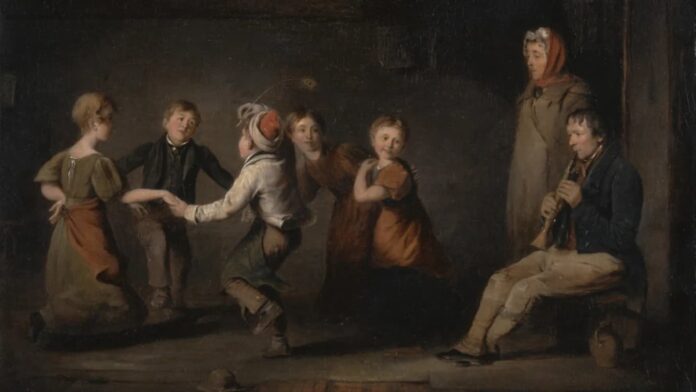Many of us enjoyed listening to the catchy tunes of nursery rhymes as kids, and some like them now. Little did we know that those famous nursery rhymes have creepy and dark messages behind them. Who would think that kids’ favorite bedtime songs bury the tales of death, murder, and other stories like that, right? It is believed that nursery rhymes were a way for adults to keep their children aware of the darker realities of the world. The list below contains 10 some of famous nursery rhymes with creepy origins that you might not know.
1Eeny Meeny Miny Moe
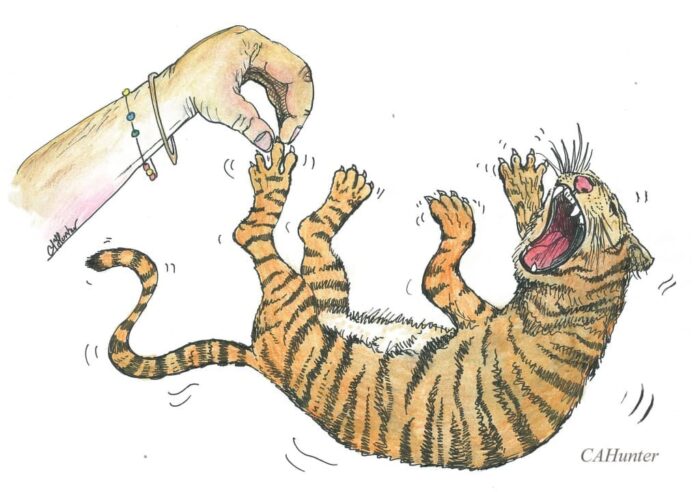
Eeny, meeny, miny, moe,
Catch a tiger by the toe.
If he hollers, let him go.
Eeny, meeny, miny, moe.
Origin
It sounds like a catchy and fun tune until you hear the original version of this rhyme in 1888. The real version of the rhyme was “Eenie, meenie, minie, mo, catch a nigger by the toe. If he hollers, let him go. Eenie, meenie, minie, mo.” Although slavery was officially over by that time, racism still exists in the United States. Since racial hatred and prejudice are reflected in the language, even kids in school sing the rhymes although without ill intention. A few generations of children who chanted the rhyme actually had no idea of the racist connotations of the verse at all. On top of that, this racist version was still around until the 20th century. In the 1950s when the N-word became taboo, the term tiger was used instead.
2Here We Go Round The Mulberry Bush
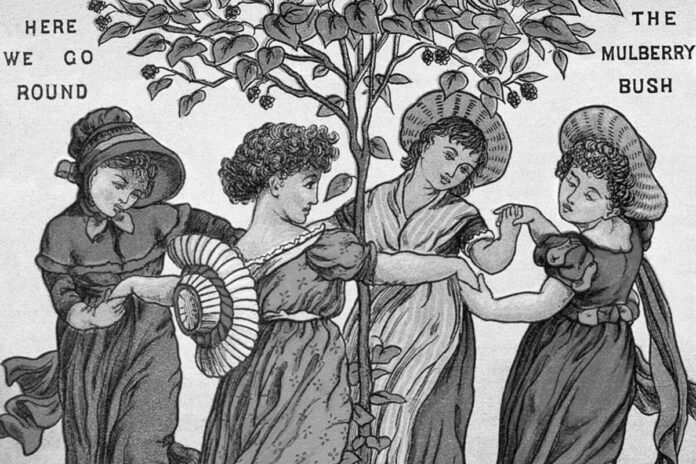
Here we go around the mulberry bush.
The mulberry bush, the mulberry bush.
Here we go around the mulberry bush, so early in the morning.
Origin
Sounds like a fun activity where kids play together around the mulberry bush. Innocent as it may sound, this nursery rhyme has a darker meaning than you think. According to historian RS Duncan, it referred to female inmates at Wakefield Prison of West Yorkshire in England during the mid-19th century. It simply describes the fact that the Victorian inmates had to exercise around a mulberry tree in the prison yard every morning. Along with that, the women would dance with their children around that mulberry tree that still stands today. It was believed that they taught their kids this rhyme to entertain them as everyone is dancing.
3Humpty Dumpty
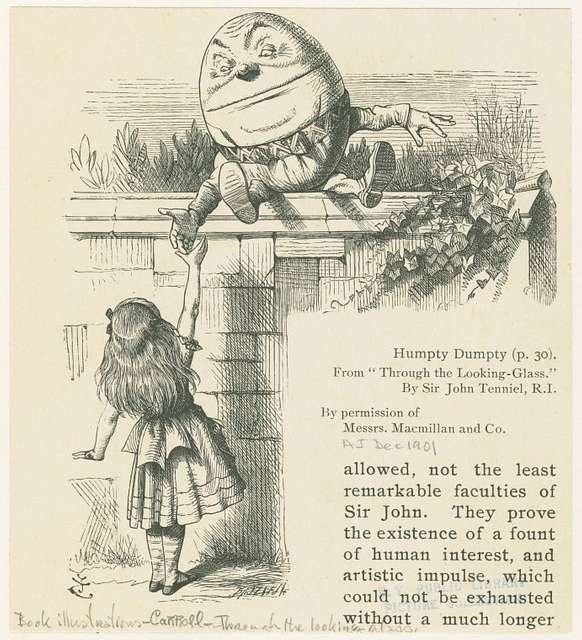
Humpty Dumpty sat on a wall.
Humpty Dumpty had a great fall.
All the King’s horses and all the king’s men,
Couldn’t put Humpty together again.
Origin
The rhyme was first printed in 1810 but Humpty Dumpty was a common snarky nickname in England since the 15th century. The term was used to describe large people back then, and it had nothing to do with the egg. There are 2 popular theories that are linked to the historical events of this nursery rhyme. One was when King Richard III fought at the Battle of Bosworth in 1485. He fell from his horse whose name was Wall during the battle. He was bludgeoned so severely that his men could not save him, making him the last king to die in battle.
Another theory dated back to 1648 during the English Civil War when the town of Colchester was under siege. This town had a castle and several churches, and it was protected by the city wall. To shield the church against the attack, the town decided to put a cannon on its roof. The gunner of that cannon was One-Eyed Jack Thompson, and he named the cannon Humpty Dumpty. Thanks to him, he managed to do a lot of damage to the Parliamentarian troops of Lord Fairfax. However, the cannon eventually tumbled to the ground and it was so heavy the men could not put it to the wall. Despite the great story, this theory is unlikely to have connections with the rhymes.
4Itsy, Bitsy Spider
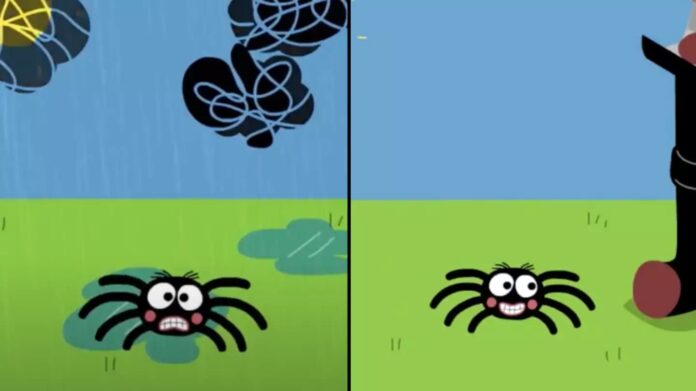
The itsy bitsy spider crawled up the water spout.
Down came the rain, and washed the spider out.
Out came the sun, and dried up all the rain.
And the itsy bitsy spider went up the spout again.
Origin
The fun thing about this nursery rhyme is that it is a playful song especially when you add finger games to it. By the verses, it is nothing more than the determination and fortitude of the little spider who never gives up. The song was first published in 1910 as a song for adults in Camp & Camino in lower California. Then it appeared in other publications of children’s nursery rhymes with the catchy and kid-friendly term itsy bitsy. Just like Humpty Dumpty, there are 2 theories that back up the stories of the rhymes.
The first theory states that The Itsy Bitsy Spider has a dark and disturbing metaphor for alcoholism. The first verse refers to the man who started drinking because the word water here represents beer or wine. As the beer “rained” down his throat and “washed” his out, he got drunk and passed out. The next morning, he dried up and got sober from the drinking the night before. Being an alcoholic, the man goes back to drinking again. It was believed that the origin of this rhyme was in the era after the Civil War. Being drunk at a time when railroads were so common was very dangerous. So the rhyme was used by parents to discourage their youngsters from consuming alcohol.
As for the second theory, it has nothing to do with alcoholism but more with the struggle of the lower classes. Each character has a meaning, the spider represents the middle class and the water spout represents the myth of the American Dream. The rain represents the bourgeoise that stands between the lower-class people and their dream. While the sun represents the false hope given to the lower class that is frequent enough to keep them going. When you put everything together, it simply means the struggle of the lower class people as the upper class stands in the way. Who would think that a fun nursery rhyme for kids could have a such deep meaning behind it like this?
5Jack & Jill
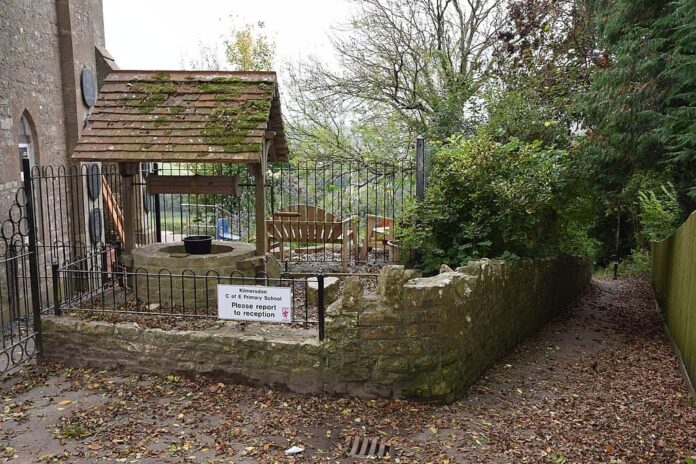
Jack and Jill, went up the hill, to fetch a pail of water.
Jack fell down, and broke his crown.
And Jill came tumbling after.
Origin
When it comes to the dark origins of nursery rhymes, Jack & Jill has to be there. The main characters of the rhymes refer to Louis XVI and his wife Marie Antoinette of the French monarchy in the 1790s. Both of them were convicted of treason during the time of the French Revolution which led to their death. King Louis XVI was beheaded (lost his crown) during the Reign of Terror. Shortly after that, Marie Antoinette was also sent to the guillotine (came tumbling after), following the abolition of the monarchy in France.
We have another believable story related to this nursery rhyme from the small town of Kilmersdon in Somerset. There is an actual hill in that town known as Jack & Jill Hill which the locals believe inspired the rhyme. The story involves a young couple: a local spinster Jill and her mysterious lover Jack. Jill was pregnant when Jack was killed by a dislodged boulder when he went up the hill to collect some water. Jill then died of a broken heart shortly after, and the town came to an agreement to raise their son together. On top of the hill today are two tombstones, a plaque, and a well dedicated to Jack and Jill.
6London Bridge Is Falling Down
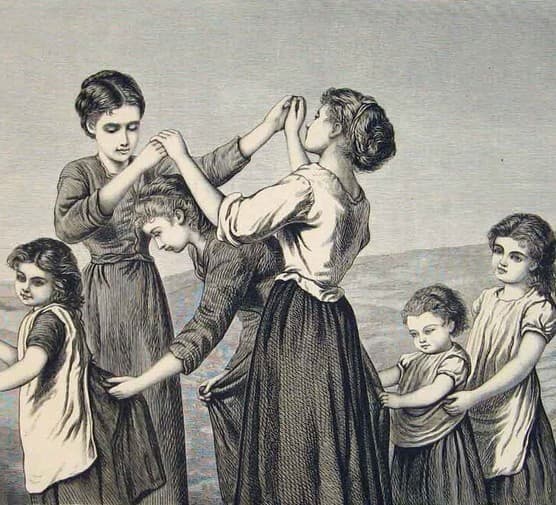
London Bridge is falling down,
Falling down, falling down.
London Bridge is falling down,
My fair lady.
Origin
According to many sources, London Bridge actually collapsed quite a number of times. The most remarkable fall was in 1014 when Viking King Olaf II allegedly pulled it down during an invasion. However, the darker origin of this nursery rhyme is more than just a Norse folksong. One of the popular origins of this rhyme links with a practice called “immurement”. Immurement was a form of punishment or a form of human sacrifice, mostly for children.
This practice entombing someone within the bridge structure so that they would help to watch over the bridge. In many cultures, it is believed that a bridge would collapse without human sacrifice. This theory makes even more sense if you take a look at the game that the children play while singing. Two kids form an arch while others run underneath until the song ends. Whoever is left at the end gets trapped by the hands of the two kids who formed the arch; hence the sacrifice.
7Mary Mary Quite Contrary
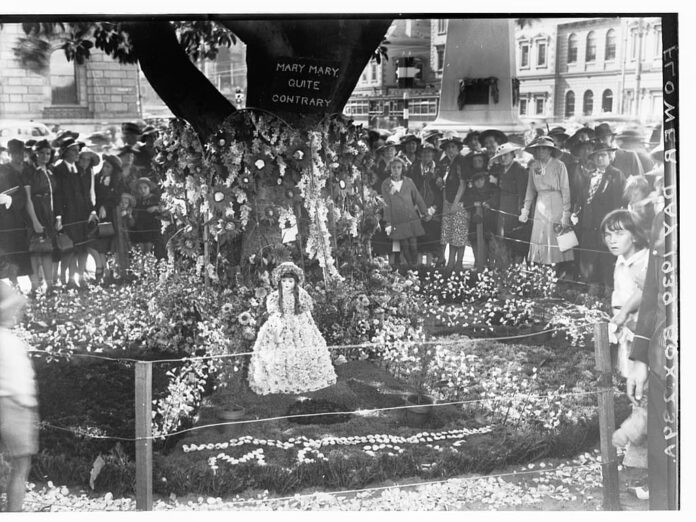
Mary Mary quite contrary, how does your garden grow?
With silver bells and cockleshells, and pretty maids all in a row.
Origin
Nursery rhymes always have hidden meanings behind some words, and so is this one. The word “contrary” is one way to describe a murderous psychopath, and you know how this rhyme goes. Mary here refers to the daughter of Henry VIII and his wife Katherine of Aragon, Mary I aka Bloody Mary. At that time, King Henry wanted to marry Anne Boleyn but his petition for divorce was refused by the Catholic Church. So he isolated himself from the Catholic Church and created Anglican Church which resulted in division between Catholic and Protestants.
When Mary came to the throne, she wanted to convert England to Catholicism again. What she wanted was “contrary” to England’s wishes because most of them were happy being Protestants. Although her reign was short (1553 – 1558), Mary executed thousands of Protestants. As for silver bells and cockleshells, they were actually torture devices from her time – not garden accouterments. Also, “pretty maids all in a row” referred to the hundreds of women burnt at the stake for the crime of being Protestants.
8Ring Around The Rosie
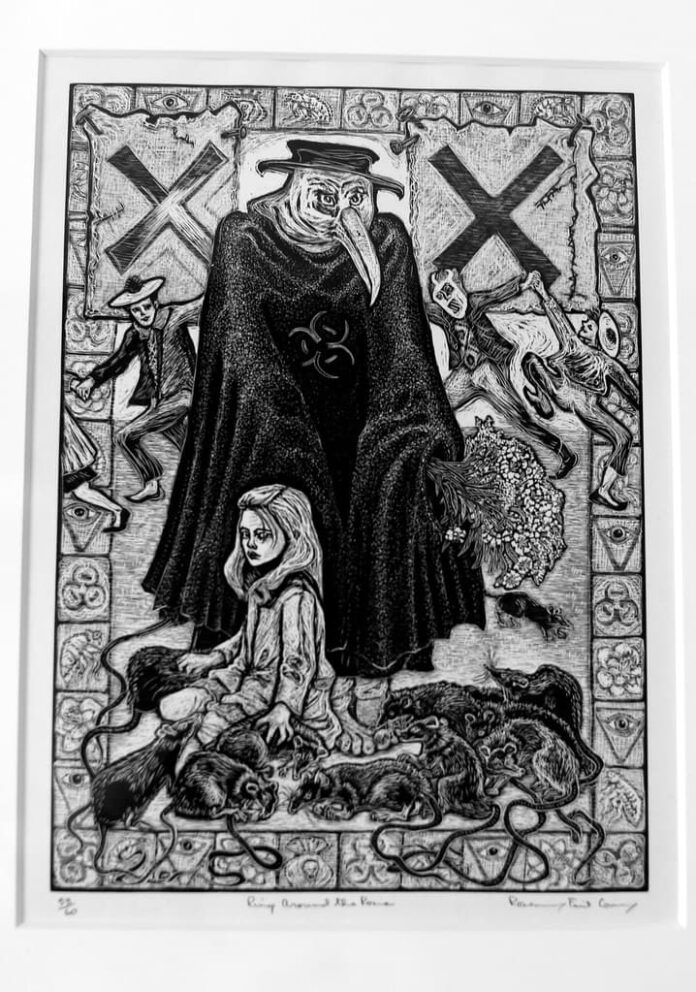
Ring around the rosie, a pocket full of posies.
Ashes! Ashes! We all fall down.
Origin
While some famous nursery rhymes have multiple backstories, this has just one. The origin of this famous rhyme is related to the Great Plague of London in 1665. Rosie refers to the rosy ash resulting from the disease during that time. People with the disease had a pungent smell, so they carried a pocket full of posies (flowers) to cover up the odor. The last verse is also very obvious because it refers to the cremated remains of the people during the plague. And in the end, they all fell down.
9Rock-A-Bye Baby
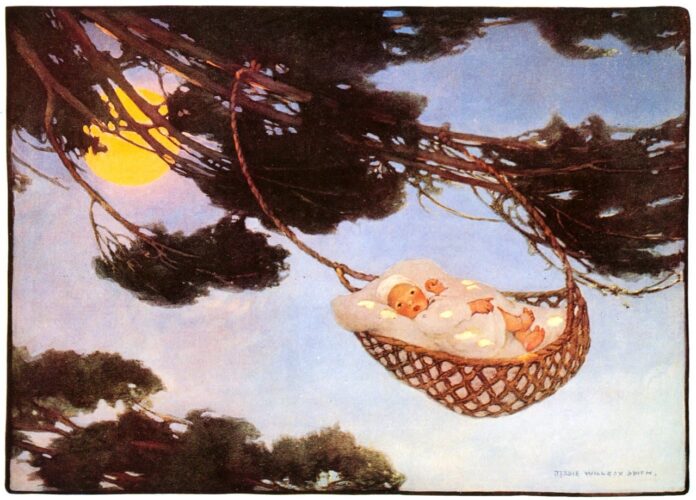
Rock-a-bye baby, on the tree top.
When the wind blows, the cradle will rock.
When the bough breaks, the cradle will fall,
And down will come baby, cradle and all.
Origin
You can already tell that this is a strange nursery rhyme. In fact, rock-a-bye baby was not meant to be a nursery rhyme for kids at all. No one would sing a song about a baby falling from a tree to the ground and breaking their limbs. The lyrics themselves are already disturbing and rather violent, so what was the origin of that? There are actually many stories that people believed to be related to this dark nursery rhyme.
One of the stories was an allegory about the political resentment of the time during the reign of King James II. In the 1600s, there were certain English folks who were fearful of the conversion to Catholicism by King James II. The lyrics referred to the new heir to the throne with the hope that the infant prince would die. This is with the purpose of overthrowing the reign of King James II. At the same time, it was widely believed that the boy was not the son of the king at all. He was just a child who was brought into the birthing room to ensure a Roman Catholic heir to the throne.
Another one came from the real-life Kenyon family of Derbyshire in England. In the 1700s, Kate and Luke Kenyon along with their 8 children made their home in a hollowed-out yew tree. The legend has it that the parents hollowed out one of the branches of the old tree to make a cradle. Once tucked, the babies can fall asleep easily to the movement of the tree in the wind.
There is also another story in 1765 about a ritual in the 17th century where people tried to bring dead newborn babies back to life. It was hoped that hanging the dead baby from a tree branch would achieve this. However, the branch would snap, and “down will come baby, cradle and all.” Many theories aside, the lyrics of this nursery rhyme are still creepy to hear and see.
10Three Blind Mice
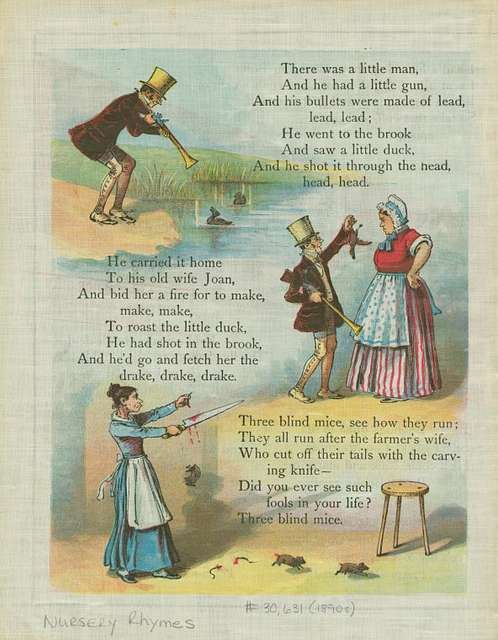
Three blind mice. Three blind mice.
See how they run. See how they run.
They all ran after the farmer’s wife,
Who cut off their tails with a carving knife.
Did you ever see such a sight in your life,
as three blind mice.
Origin
Mary Mary Quite Contrary is not the only nursery rhyme dedicated to Bloody Mary’s reign. Three Blind Mice also has the same indication towards Mary I as well. The three blind mice referred to a trio of Protestant bishops including Hugh Latimer, Nicholas Radley, and Thomas Cramer who was the Archbishop of Canterbury. Three of them conspired to overthrow Mary but their attempt was not successful. They were punished by burning at the stake for heresy and treason. The term blind referred to their religious beliefs, not being blinded and dismembered by Mary I.
Related Post: Superstitious Beliefs Around The World

